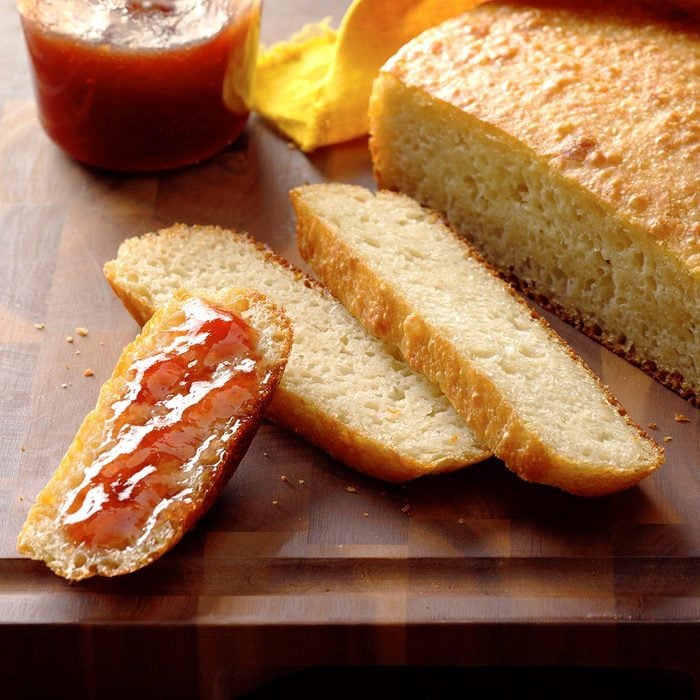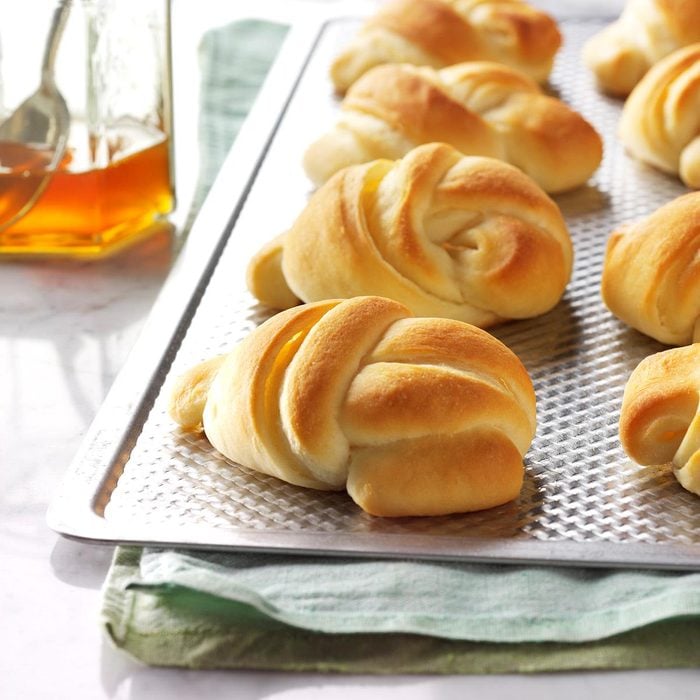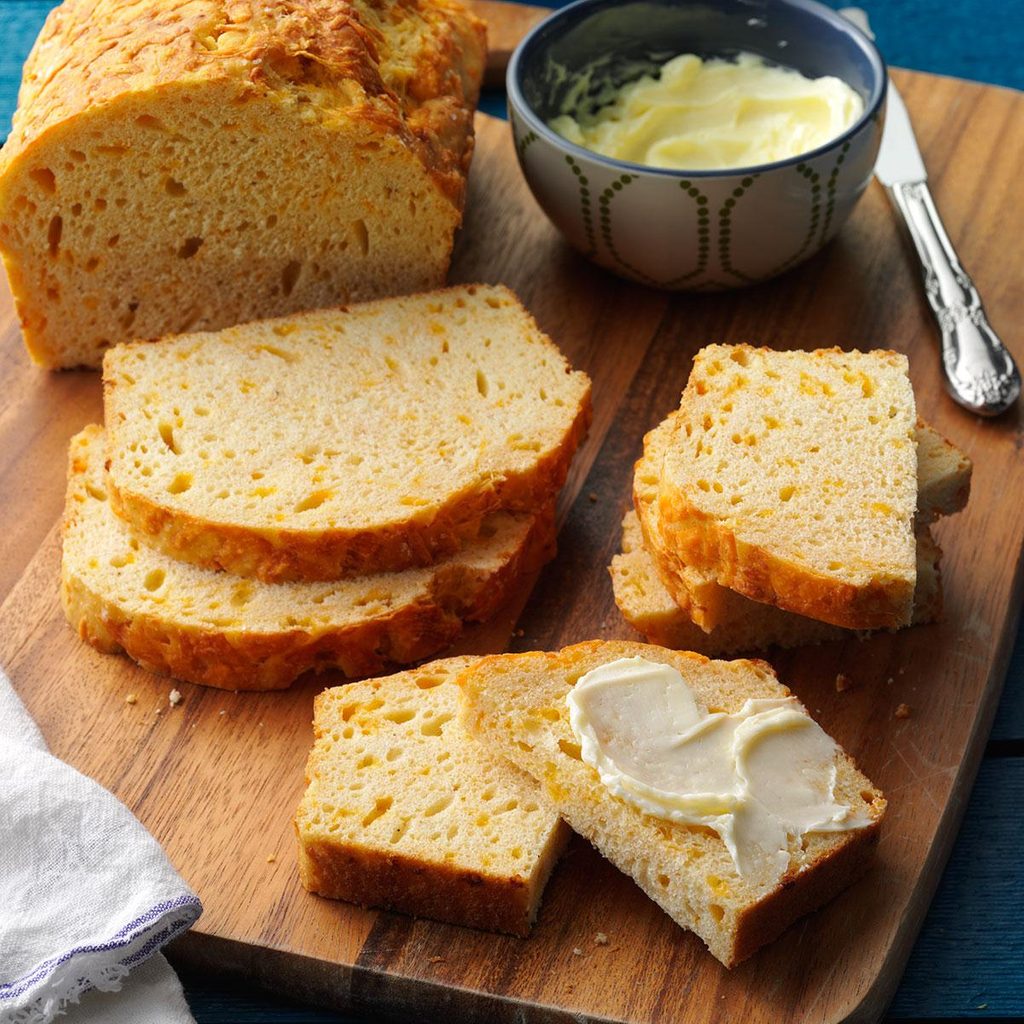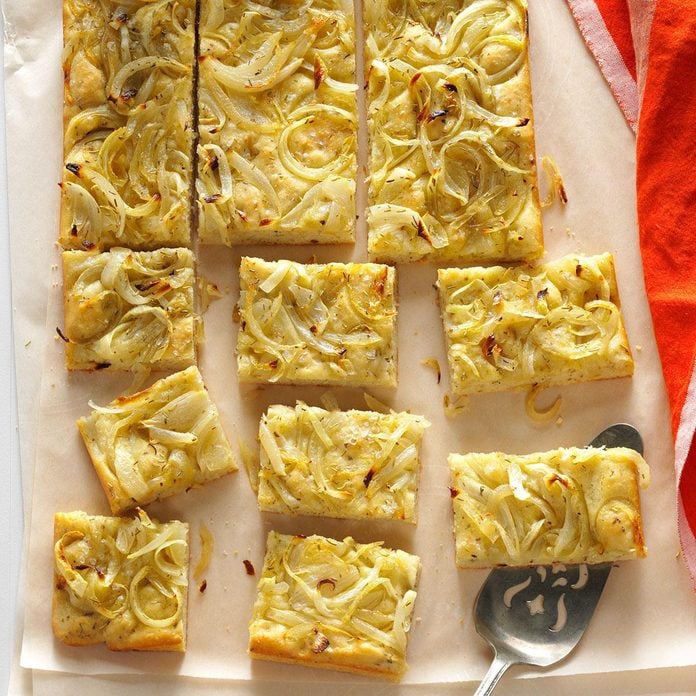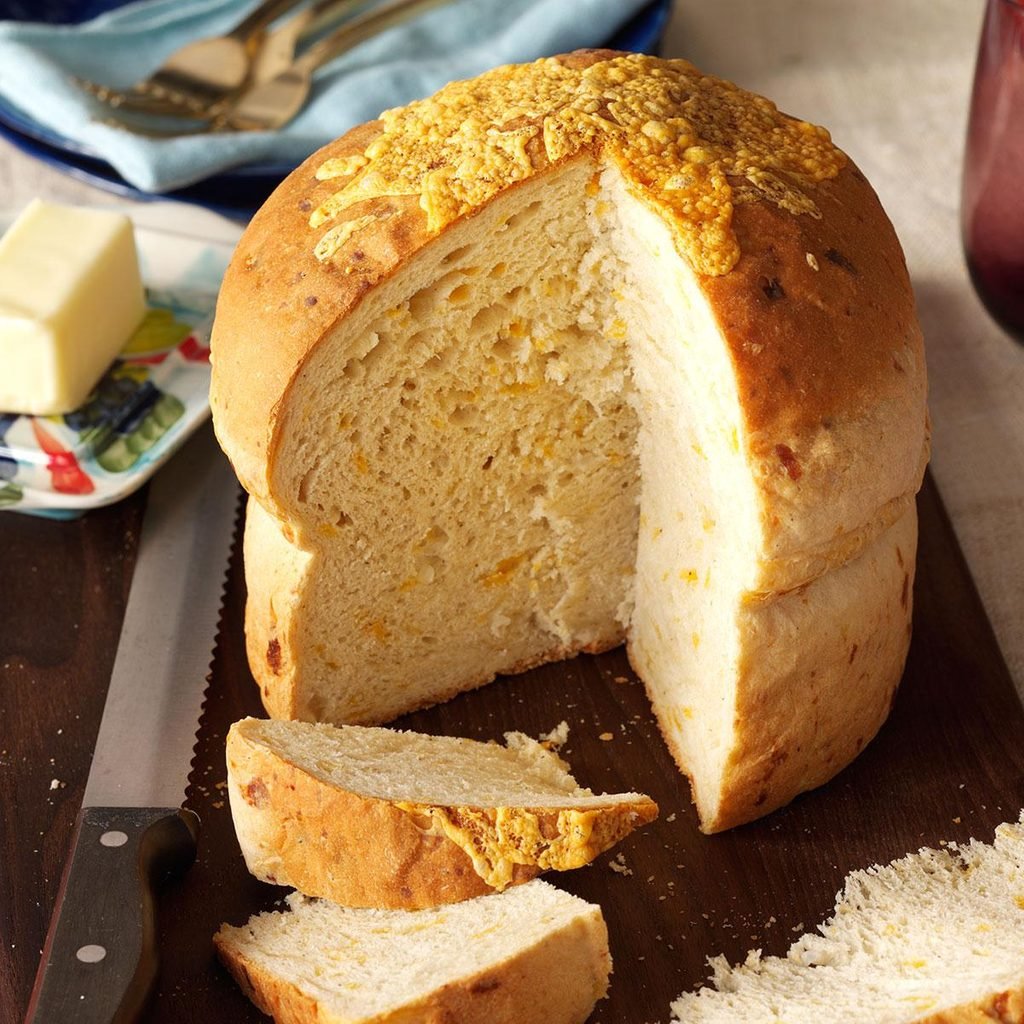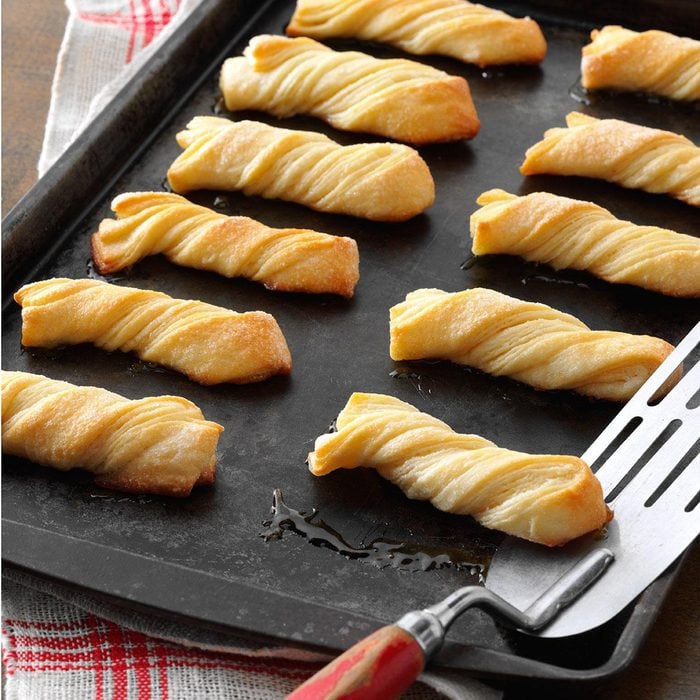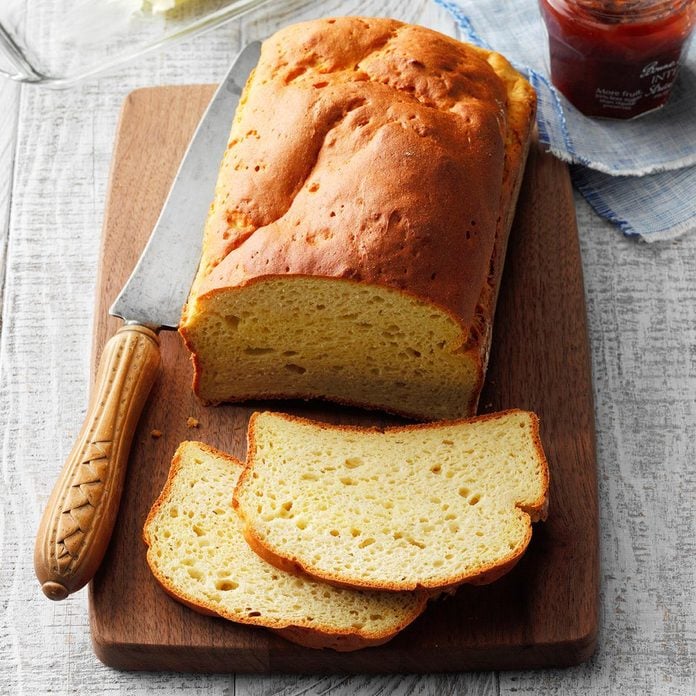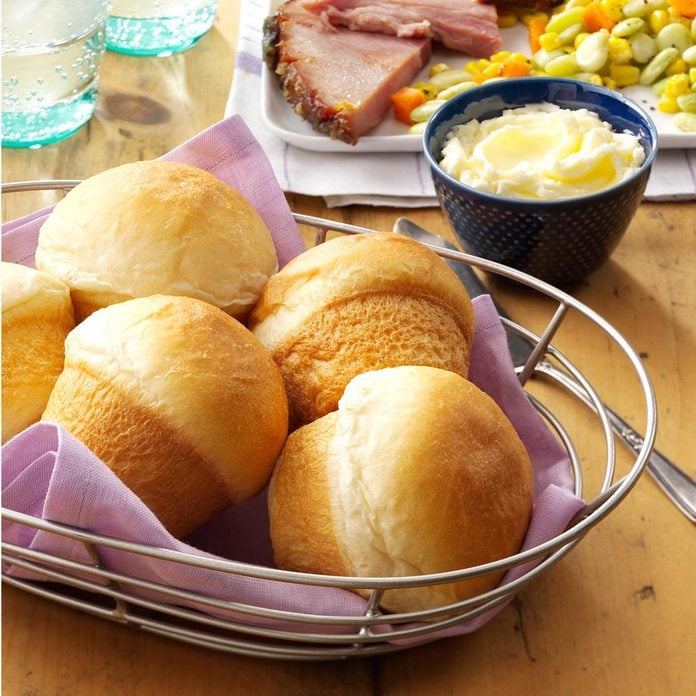Whether you're baking bread or whipping up a batch of pastries, we're here to share everything you need to know about how to use yeast.

The Ultimate Guide to How to Use Yeast

Every form of baking, whether savory or sweet, can be incredibly fulfilling. Baking a batch of colorful cupcakes allows you to get creative in the kitchen, while putting together luscious cinnamon rolls for breakfast or a beautiful loaf of bread from scratch will certainly leave you feeling accomplished. No matter what you’re making, baking will have you grinning ear to ear—but some recipes are a bit more complicated than others.
Diving into a recipe that calls for yeast can be daunting, especially if you’re new to baking. But have no fear. Once you learn the basics of how to use yeast, you’ll be a pro in no time.
On This Page
What Is Yeast?
First things first: When a recipe calls for yeast, what exactly does it mean? Yeast is a living microorganism. It exists naturally all around us, but only certain types are harnessed to be used in baked goods.
Because yeast is a living organism, it likes to eat, and when yeast is introduced to the sugars and starches found in a baking recipe, that’s exactly what it does. As the yeast feeds on the sugars and starches in a dough, it releases carbon dioxide, ultimately causing the dough to rise. That rise is what creates the beautiful, fluffy texture of a bread or yeast-based pastry.
The Main Types of Yeast
As you’re diving into the wild world of yeast, it’s important to recognize that there are two main types of yeast: wet yeast and dry yeast.
Wet Yeast
Wet yeast, or fresh yeast, can be tricky to come by. Because its shelf life is only two weeks, it isn’t stocked by all grocery stores. Plus, since it’s fresh, it needs to be refrigerated. Since it’s trickier to come by, fresh yeast isn’t usually called for in at-home baking recipes.
Wet yeast activates quicker than dry yeast because of its moisture content. To use wet yeast, you should first break up the compressed block into smaller crumbles. Then, it can be measured and added straight to a dough.
Dry Yeast
Dry yeasts are the types of yeast you’re most likely to find in your grocery store’s baking aisle. They have a longer shelf life—typically up to two years from the packaging date. But not all varieties of dry yeast are created equal. Depending on your recipe, you may find that active dry yeast or instant yeast is preferred.
Active dry yeast
Active dry yeast and instant yeast look and feel incredibly similar, but the difference lies in the way the yeast acts in a recipe. Active dry yeast is a fine, granular yeast that’s dried, leaving it dormant in the package. In order to utilize active dry yeast, it should first be proofed in order to wake it up (here’s how to proof yeast). This method lets you know for sure if the yeast is alive and usable, or dead.
Instant yeast
Instant yeast, sometimes called bread machine yeast, is ground into finer granules, allowing it to be easily incorporated into a dough—no proofing necessary. You can add instant yeast straight into your dough mixture and let the moisture in your mixture activate it. Instant yeast will cause the dough to rise much faster than active dry yeast, and recipes that call for instant yeast usually only require one rise.
Check out our full guide on the best type of yeast for your bread.
How to Substitute Different Types of Yeast
Working on a recipe that requires a specific type of yeast, but you’ve run out? If you have another type of yeast on hand, you can make the switch.
How to substitute active dry yeast for instant yeast
If your recipe calls for instant yeast but you only have active dry yeast on hand, it’s a simple swap. Instead of adding the yeast straight to the dough, you’ll just need to proof it first and use a quarter more than what the recipe calls for. For example, if the recipe calls for 1 teaspoon instant yeast, you’ll want to use 1-1/4 teaspoons active dry yeast. Proof the yeast in a separate bowl with warm water or milk, and then adjust the amount of liquid you add to the rest of the dough based on how much you used for proofing the yeast.
How to substitute instant yeast for active dry yeast
When you’re using instant yeast instead of active dry yeast, you’ll need to reduce the amount of yeast. Use a quarter less than what the recipe calls for. So if the recipe lists 1 teaspoon active dry yeast, you’ll want to use 3/4 teaspoon instant yeast. Then, skip the proofing step and add the instant yeast straight into the dough mixture.
How to substitute dry yeast for fresh yeast
Because fresh yeast is already moistened, alive and ready to go, substituting dry yeast in its place calls for a conversion. To substitute dry yeast for fresh yeast, use one package (or 1/4 ounce) for every 2/3 ounce of fresh yeast.
How to Test and Proof Yeast
When using active dry yeast, one of the most important steps is to make sure your yeast is alive. It’s dried and dormant in the package, so you need to wake it up. Testing the yeast lets you know it’s working and can be used to proof your bread dough.
Testing yeast only takes a few extra minutes. This step is especially important if you’re hoping to use yeast that’s past its best-by date.
You may also hear bakers talk about how to proof yeast. Testing yeast and proofing yeast are pretty much the same step. By adding a package of active dry yeast to 1/2 cup of warm water along with 1 teaspoon of sugar, you’ll know almost instantly if your yeast passes the test. From there, allow your yeast to finish proofing by letting it sit for 5 to 10 minutes. You’ll know your yeast is proofed once you see the mixture start to bubble and eventually become foamy on the top. Once proofed, your yeast is ready to use.
How to Store Yeast
Because yeast is a fickle organism, you’ll want to be sure you’re storing it correctly. Most packages or jars of active dry yeast have a shelf life of two years, but that’s based on storage.
For best results, store unopened packages or jars of dry yeast in a cool, dry space free of light, such as a cupboard or pantry. Yeast can also be stored in the fridge or the freezer. Once your yeast is opened, it’s important to remember that it reacts to moisture, air and changes in temperature. Keep opened yeast in an airtight container in the fridge or freezer for best results.
For fresh yeast, be sure to keep it refrigerated, or tuck unopened fresh yeast in the freezer.
Tips for Working with Yeast
What happens if you don’t activate yeast?
If you’re working with active dry yeast and you don’t activate it before adding it to a recipe, you’ll be taking a gamble. Chances are the yeast will still wake up and do its thing in the dough, but only if it’s alive and well–and you won’t know that since you haven’t proofed it. The point of activating the yeast ahead of time is to make sure it’s working before you put in time kneading, rising, shaping and baking your dough.
Here’s what to do if you’ve activated your yeast and your bread still isn’t rising.
What happens if you use dead yeast?
In order for your dough to rise properly, you need the yeast to feed on the starch in the mixture and release carbon dioxide along the way. If your yeast is dead, then it will be unable to perform this task effectively and you’ll end up with a baked good that’s unappealingly dense, rather than light and fluffy.



















